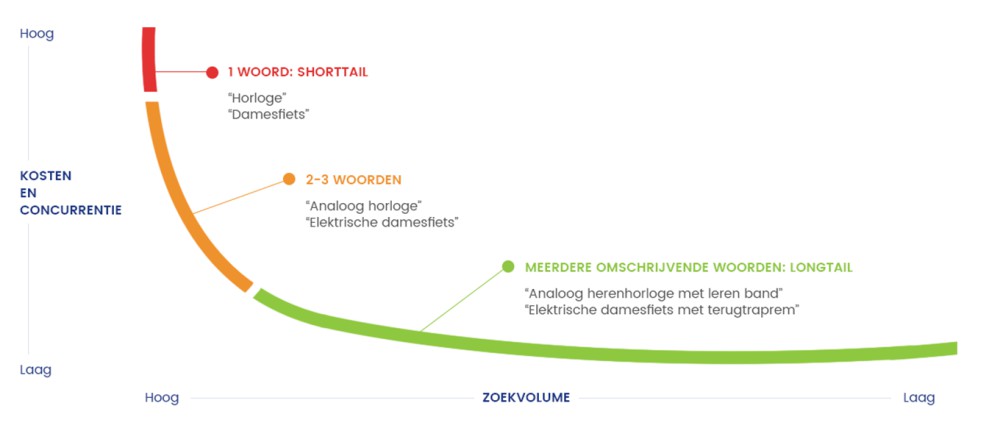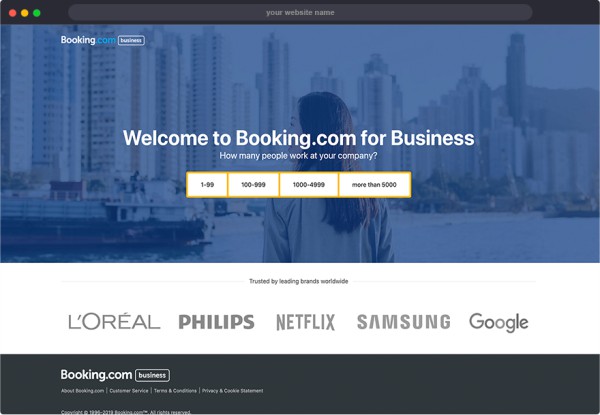Content optimization is a crucial part of the Search Engine Optimization (SEO) of your website.
How does my website improve in the Google ranking?
A question that we are often asked is: How does my website score higher in Google?. Building strong external backlinks (linkbuilding / backlinking) is one of the elements that aids the improvement of your website’s position in search engines. But which other elements are factored in as well? The following pointers can help you to gradually improve your website’s visibility.
Looking for online success?
We are curious to hear your story! What does your organization do, and what is your mission?
We love to look at how you can achieve (even more) online success, and how we can help you realise this.
SEO-friendly texts
Writing SEO-friendly content is a job on its own, but once you know the things that you have to keep in mind, this skill is accessible to anyone.
For SEO it is not enough to just provide information-based value. For optimal search engine visibility, your content must be nice to read as well, and - more importantly - optimized with important keywords. The more relevant keywords your text contains, the better your website scores when users Google that specific subject.
How does my website become number 1 in Google anno 2020?
Keep in mind that a high Google ranking is not guaranteed by these pointers, because the way that search engine algorithms analyze websites changes continuously. Hence, there is not one method that can 100% guarantee your top position in google.
Luckily, there is also good news. Over the years there are proven effective methods to give the algorithms what they’re designed for. And that results in higher search engine rankings, not just for now, but also in the future.
Technical SEO (Search Engine Optimization)
Technical optimization is often a neglected element within SEO. Yet, just like any other element, it aids the Google indexing, and thus visibility, of your website.

Higher in Google via keyword research and competitor analysis
Before you start writing and using keywords, it is crucial that you start with a keyword research. This is easier than it sounds, and can be done with free tools, such as the Google Planner.
With this tool you can see how often certain keywords are used to search and you will get an overview of related keywords. These related keywords offer new angles and improve your topic’s visibility for various keywords regarding the same subject. If you combine your keyword research with an analysis of your competitors, you can assess which positions in the search result hierarchy are feasible for your website. Keep in mind that the keywords that you use must be related to the content you write on, otherwise you run the risk of being flagged by one of Google’s algorithms.
Short-tail and long-tail keywords
The more popular a keyword is, the more intense the competition within this subject. Most websites attempt to deliver the content that many people are looking for.
Most search engine users employ relatively short search requests (short-tail). Longer phrased search requests (long-tail) are employed less frequently. This means that there is less competition for long-tail keywords and that you can easily score high in this department.

How do I score high on short-tail keywords?
Are you ambitious and do you also want to compete for the highest rankings in short-tail keywords? Keep in mind that there is a fierce competition. This means that it will take a long time before your website gets a high(er) position in the Google ranking.
What is the best strategy to improve my Google ranking?
With a well devised long-tail strategy and a technically optimized website it is possible to achieve a high google ranking rather quickly. A smart tactic, then, is to start with employing a long-tail strategy. Has your website gained authority in the long-tail keyword department of search engines? Then you have created the foundation that you need to start competing for short-tail keywords as well.
If you’re still not sure on how you should start, you can freely ask our SEO and SEA experts about the possibilities for your own website.
Professionally optimized structure & content
Do you want your website found on a well-thought-out page structure whereby your visitors know intuitively how they should navigate through your menu items? Moreover, do you want them to be enthused by cleverly drafted texts, well-conceived content and fitting photos and illustrations? Then our website content packages are the solution for you!
Concepting: content and scope
The first thing we do is to take the time to meet and get to know each other. In this, you can ask us any question you have, and we will ask you about your organization and your market, your customers and target group, and the services and/or products that you offer. This will give us a clear overview of you, your organization model, and what you want to achieve with your website.
Based on this information, we will draft the structure of your pages and outline the menu layout for your website. The result will be a logical structure that presents your web pages, headlines, and forms in an attractive manner.
Subsequently, we will create the content for your website. In most cases this will consist of texts about your organization, your services, and your contact details. The content can of course consist of testimonials, blogs, and customer cases as well. In this we will of course provide fitting illustrations, or integrate your personal photos and / or videos. Altogether these texts will be aimed at optimizing your organization’s position in the market and to motivate your visitors to engage with you.
Conversion oriented designs
These days, digital marketing is one of the primary tools of any marketing department. Digital marketers study what web visitors are looking for so their website can be used to target the right personas. In order to do this, the website will be oriented toward these personas, which draws them in via Google and other marketing avenues.
In this orientation, the website’s layout is designed to address these personas and convince them of the brand’s ethos. Subsequently, in order to stimulate them to try the brand products and/or services, the “Add to cart” and “Info” buttons are enlarged or made prominently visible otherwise. These little design tweaks help to convert web visitors into actual customers / clients.
In order to achieve conversions, you should always take an individual approach. Each organization has its own goals, which means that the ways to engage visitors vary from website to website. Methods to stimulate visitor engagement include: offering a free product, offering a free download, asking to call visitors back, collecting contact information, and offering a demo or a trial. All this helps to start engaging with potential customers. During this engagement you can accumulate information about what they are interested in, so you can later approach them with this individually.


Call to actions
CTAs (Call to Actions) are instruments that are used to stimulate those visitor engagements. A call to action is an element on the website - a button, a form, or a popup - that offers something to visitors in order to stimulate them to engage.

Landing pages
Landing pages perform a role similar to CTAs, but they are more elaborate. Whereas the CTA is one element on a webpage, a landing page is a complete webpage centered on advertising or offering a single product or service. Since landing pages operate separately from the main website, they are often used to individually market certain products or services. This marketing tool works particularly effective in combination with a well-devised Google AdWords campaign, for Google ads can lead directly to the landing page, which prevents potential distractions from the main website.
